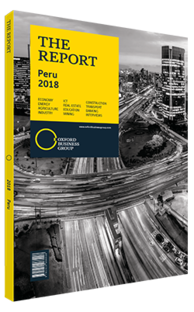Rik de Buyserie, CEO and Country Manager, Engie Peru : Interview

Interview : Rik de Buyserie
What impact does the country’s surplus of generation capacity have on the sector?
RIK DE BUYSERIE: The immediate effect of any surplus is a decrease in prices. Therefore, energy consumption becomes inexpensive for both industrial and private users. However, this means lower margins for generators. This situation has divided the industry into two clearly defined groups. The first of these is formed by the top-three producers, which together control 60% of energy production in the country. The second group is made up of small producers who control the remaining 40%. While the first group employs more conservative commercial strategies when it comes to purchasing power, the second group – especially hydropower and thermoelectric plants – sell at spot prices given the low price context. This divide between energy producers has spurred a campaign to change the regulation of the sector with the aim of increasing spot prices. Although it is true that current spot prices are a barrier to investment in the sector, the reality is that the sector does not need any more investment in generation capacity, given the existing surplus. This confrontation within the sector requires resolution as it is causing uncertainty among investors.
How would the market be affected by an increase in energy spot prices brought about by changes to the regulation of the sector?
DE BUYSERIE: The impact would depend on the details of the new regulatory framework, were it to change. On the one hand, higher spot prices would enhance investment over the subsequent three to four years. On the other hand, higher spot prices mean that stakeholders will have to pay more – most likely the government through subsidies. In a situation with no surplus of energy, spot prices would automatically grow without the need for any regulatory changes.
If regulatory changes are to take place, they must be discussed with all parties involved, and a three-year period of transition should be provided in order to adapt the commercial and purchasing strategy to the new framework, should there be one.
Given the surplus of energy, where will the bulk of investment take place in the medium to long term?
DE BUYSERIE: Without the development of new generation projects, the current energy surplus situation could end in the early 2020s. If new bids do take place, however, there can be no doubt that they will be in the renewables segment, and each new bid would further extend the energy surplus period. Nevertheless, there are two demand-side factors that could alter the current surplus situation. First, there could be a considerable increase in the use of electric vehicles. Second, the country could see significant growth in the mining sector, especially in terms of production.
On a different note, it is worth mentioning that the country lacks sufficient regulation for distributed generation. If this issue was resolved, it would stimulate a significant combined amount of small-scale demand from different users. With regard to electric transformation, the time it takes to implement new electricity projects is considerably lower than it ever was before.
How will the expected 2.5% increase in energy demand in 2018 affect the energy surplus?
DE BUYSERIE: While demand will increase modestly, there is no risk of demand for energy exceeding the country’s generation capacity until at least 2019 or 2020. Furthermore, the overall stability of the economy and the fact that mining companies have access to low-cost energy is very positive for competitiveness.
The development and execution of mining projects takes a considerable amount of time, which is why one would not expect demand for energy to grow anymore than is projected over the short to medium term, especially because new mining projects can take up to five years to reach their peak energy demand.
You have reached the limit of premium articles you can view for free.
Choose from the options below to purchase print or digital editions of our Reports. You can also purchase a website subscription giving you unlimited access to all of our Reports online for 12 months.
If you have already purchased this Report or have a website subscription, please login to continue.

